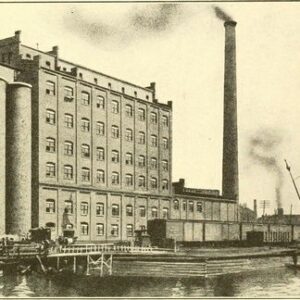
- This project has passed.
YSI – Economic History Graduate Webinar: Matthew Curtis
YSI - Economic History Graduate Webinars 2020
Start time:
May 13, 2020 @ 2:00 pm - 3:00 pm
EDT
Location:
Online
Type:
Other

Description
Matthew Curtis, PhD Candidate at the Department of Economics at UC Davis will present his work: *Before the fall: Child quantity and quality in pre–transition Quebec. *
If you wish to attend, please register for the entire series here: https://forms.gle/LtqDgzoDtAojZg1S8
Attendees will receive by email on Wednesday morning the link to join the webinar.
Abstract:
While it plays a key role in theories of the transition to modern economic growth, there are few estimates of the quantity–quality trade–off from before the demographic transition. Using a uniquely suitable new dataset of vital records, I provide several estimates of the trade–off in Quebec between 1620 and 1850.
First, I exploit the fact that twin births, conditional on mother’s age and parity, are a random increase in family size. I estimate that one additional child who survived past age 1 decreased the literacy rate (proxied by signatures) of their older siblings by 5 percentage points. Second, I argue that the aggregate province wide mortality rate during the year a younger child is born was exogenous to individual family characteristics. Using this as an negative shock to family size, I again estimate that one additional child who survived past age 1 decreased the literacy rate of their older siblings by 5 percentage points.
As two very different instruments result in similar estimates, I argue there is strong evidence of a modest trade–off. Moreover, by using two instruments I am able to rule out bias from reinforcement and compensation effects. In many settings, IV estimates of the trade–off may be biased if parents reallocate resources towards (reinforcement) or away from (compensation) children with higher endowments. Here, I show that both twins and children born in years with high aggregate infant mortality rates have on average lower literacy rates than their older siblings. As one shock increases and one shock decreases family size, but both result in older siblings having relatively higher endowments, reinforcement or compensation would bias the estimates in different directions. As the estimates are similar, I conclude there is no evidence that parents practiced reinforcement of compensation. Is the estimated trade–off economically significant? I compare Quebec to a society with similar culture and institutions: pre–Revolutionary rural France. In 1628–1788, a woman surviving to age 40 in Quebec would expect to have 1.7 additional children surviving past age 1 compared to her rural French peers. I average literacy rate in France was about 9.5 percentage points higher than in Quebec. Assuming the trade–off was a linear and constant 5 percentage points, reducing family sizes to French levels would have increased literacy by 8.6 percentage points in the next generation, closing most of the gap.
However, pre–Revolutionary France was hardly a human capital rich society. Proxying for the presence of the primary educators of the period — clergy — with unmarried adults, I find preliminary evidence that the trade–off was steeper in areas of Quebec with greater access to education. Altogether, I interpret my results as evidence that the trade–off existed and can explain at least some differences across societies. However, for it to allow a more radical transformation of society, it would need to have become much steeper, perhaps through increased access to education.
Hosted by Working Group(s):
Organizers
Attendees
Maylis Avaro